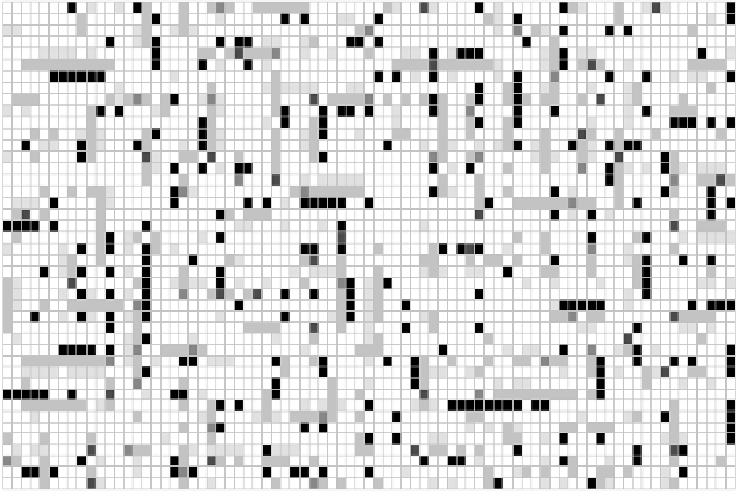Information Technology Reference
In-Depth Information
Fig. 3.
An example of initial configuration (primeval soup).
4
Experimental Results
First of all we have made some empirical tests to set the optimum quiescent state
concentration for the experiments, and we have fixed a value of 70%. Then we have
performed 3 sets of 100 batch experiments each. The size of the cellular grid has been
256×256 in all the cases, and the simulations have run up to 1000 steps. In the first set
the affinity factors of the initial configurations have included self-inspection signals
but no construction signals. They are referred as self-inspecting model experiments.
In the second one the design has been the opposite, and we call them genetic model
experiments. Finally we have used a third combined set to monitor possible
interferences or synergies between the different types of signals.
In the experiments of the genetic model the configuration stabilizes in a space
without construction signals, that are wasted away in a short number of steps without
generating complete patterns.
In the experiments of the self-inspecting model a variety of structures is produced:
•
linear paths without any signal (initially the most common one)
•
inverted loops (with the soft sheath towards the outside)
•
standard sterile loops (without signal and/or arms)
•
structures where the orientation of the path changes
•
loops with more than one arm
•
standard reproducers

